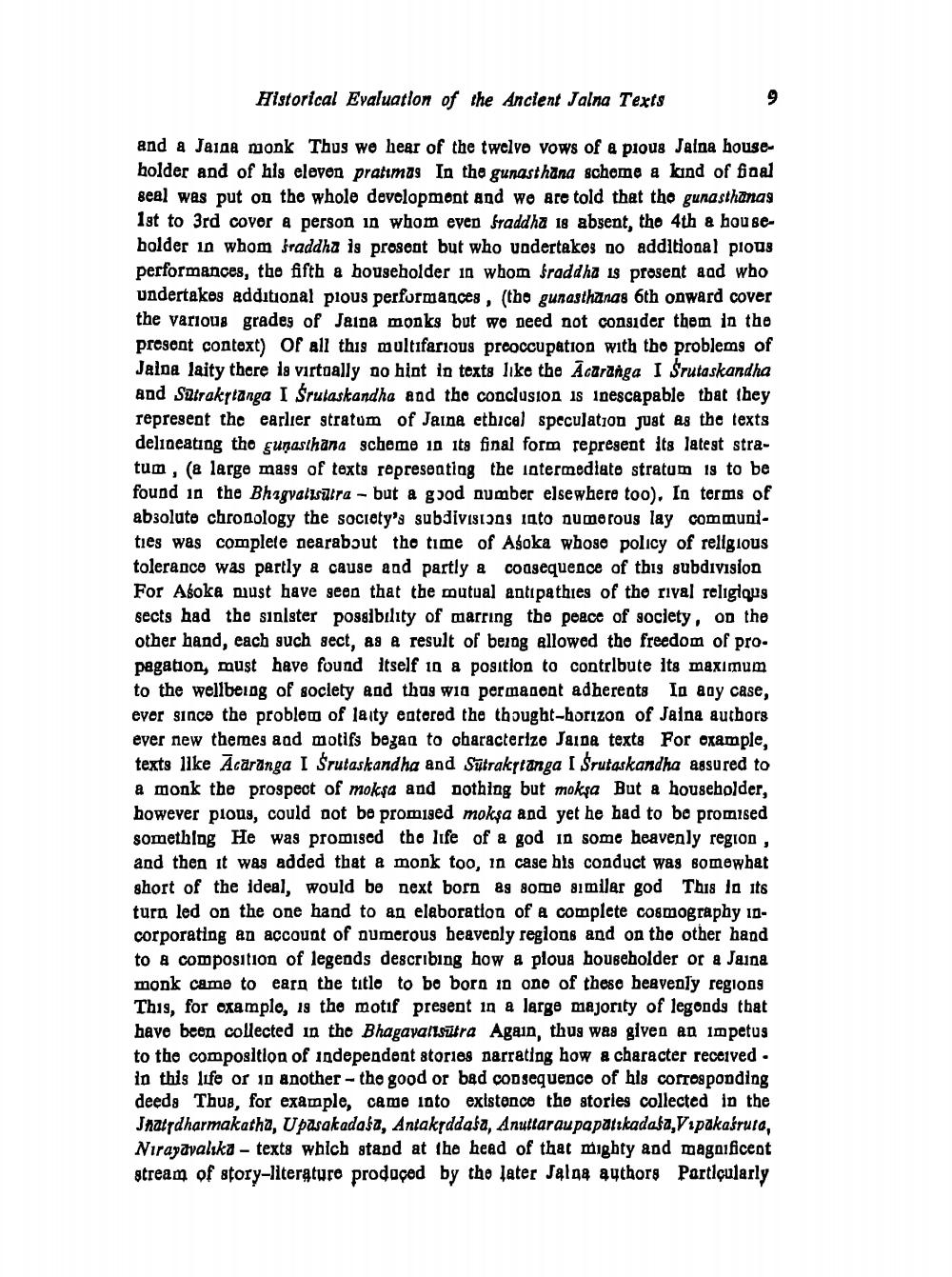________________
Historical Evaluation of the Ancient Jalna Texts
and a Jaina monk Thus we hear of the twelve vows of a pious Jalna householder and of his eleven pratimas In the gunasthana scheme a kind of faal 8eal was put on the whole development and we are told that the gunasthanas 1st to 3rd cover a person in whom even fraddha 18 absent, the 4th a householder in whom fraddha is prosent but who undertakes no additional plous performances, the fifth a householder in whom Sraddha is prosent and who undertakes additional pious performances, (the gunasthanas 6th onward cover the various grades of Jaina monks but we need not consider them in the present context) of all this multifarious preoccupation with the problems of Jaloa laity there is virtually no bint in texts like the Acaranga I Srutaskandha and Satrakrianga I Śrutaskandha and the conclusion is inescapable that they represent the earlier stratum of Jaina ethical speculation just as the texts delineating the gunasthana scheme in its final form represent its latest stratum , (a large mass of texts representing the intermediate stratum is to be found in the Bhagvatisatra - but a good number elsewhere too). In terms of absolute chronology the society's subdivisions into numerous lay communities was complete nearabout the time of Asoka whose policy of religious tolerance was partly a cause and partly a consequence of this subdivision For Asoka must have seen that the mutual antipathies of the riyal religious sects had the sinlster possibility of marring the peace of society, on the other hand, each such sect, as a result of being allowed the freedom of pro. pagation, must have found itself in a position to contribute its maximum to the wellbeing of society and thus wia permanent adherents In any case, ever since the problem of laity entered the thought-horizon of Jaina authors ever new themes and motifs began to oharacterize Jaina texts For example, texts like Ācāranga I Śrutaskandha and Sutrakrtanga Srutaskandha assured to a monk the prospect of mokşa and nothing but moksa But a householder, however plous, could not be promised mokşa and yet he had to be promised something He was promised the life of a god in some heavenly region , and then it was added that a monk too, in case bis conduct was somewhat short of the ideal, would be next born as some similar god This la its turn led on the one hand to an elaboration of a complete cosmography 10corporating an account of numerous beavenly regions and on the other hand to a composition of legends describing how a ploua householder or a Jaina monk came to earn the title to be born in ono of these heavenly regions This, for oxample, is the motif present in a large majority of legonds that have been collected in the Bhagavallstra Again, thus was given an impetus to the composition of independent stories narrating how a character received . in this life or 10 another - the good or bad consequence of his corrosponding deeds Thus, for example, came into existence the stories collected in the Jhardharmakatha, Upasakadaba, Antakyddaba, Anuttaraupapatikadaka, Vipakaśrula, Nirayavalika - texts which stand at the head of that mighty and magnificent stream of story-literature produced by the later Jalne authors Particularly




